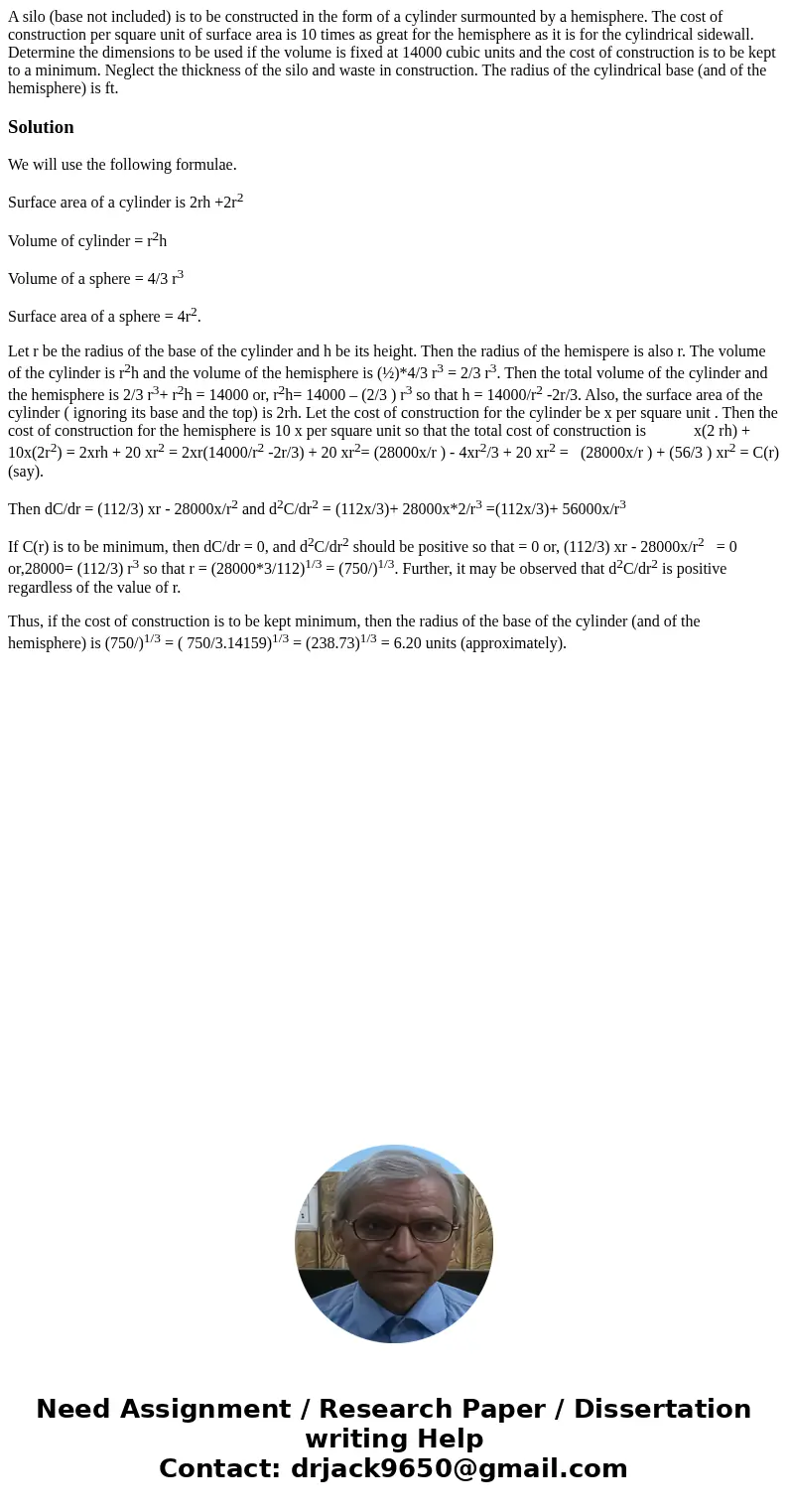A silo base not included is to be constructed in the form of
Solution
We will use the following formulae.
Surface area of a cylinder is 2rh +2r2
Volume of cylinder = r2h
Volume of a sphere = 4/3 r3
Surface area of a sphere = 4r2.
Let r be the radius of the base of the cylinder and h be its height. Then the radius of the hemispere is also r. The volume of the cylinder is r2h and the volume of the hemisphere is (½)*4/3 r3 = 2/3 r3. Then the total volume of the cylinder and the hemisphere is 2/3 r3+ r2h = 14000 or, r2h= 14000 – (2/3 ) r3 so that h = 14000/r2 -2r/3. Also, the surface area of the cylinder ( ignoring its base and the top) is 2rh. Let the cost of construction for the cylinder be x per square unit . Then the cost of construction for the hemisphere is 10 x per square unit so that the total cost of construction is x(2 rh) + 10x(2r2) = 2xrh + 20 xr2 = 2xr(14000/r2 -2r/3) + 20 xr2= (28000x/r ) - 4xr2/3 + 20 xr2 = (28000x/r ) + (56/3 ) xr2 = C(r) (say).
Then dC/dr = (112/3) xr - 28000x/r2 and d2C/dr2 = (112x/3)+ 28000x*2/r3 =(112x/3)+ 56000x/r3
If C(r) is to be minimum, then dC/dr = 0, and d2C/dr2 should be positive so that = 0 or, (112/3) xr - 28000x/r2 = 0 or,28000= (112/3) r3 so that r = (28000*3/112)1/3 = (750/)1/3. Further, it may be observed that d2C/dr2 is positive regardless of the value of r.
Thus, if the cost of construction is to be kept minimum, then the radius of the base of the cylinder (and of the hemisphere) is (750/)1/3 = ( 750/3.14159)1/3 = (238.73)1/3 = 6.20 units (approximately).

 Homework Sourse
Homework Sourse